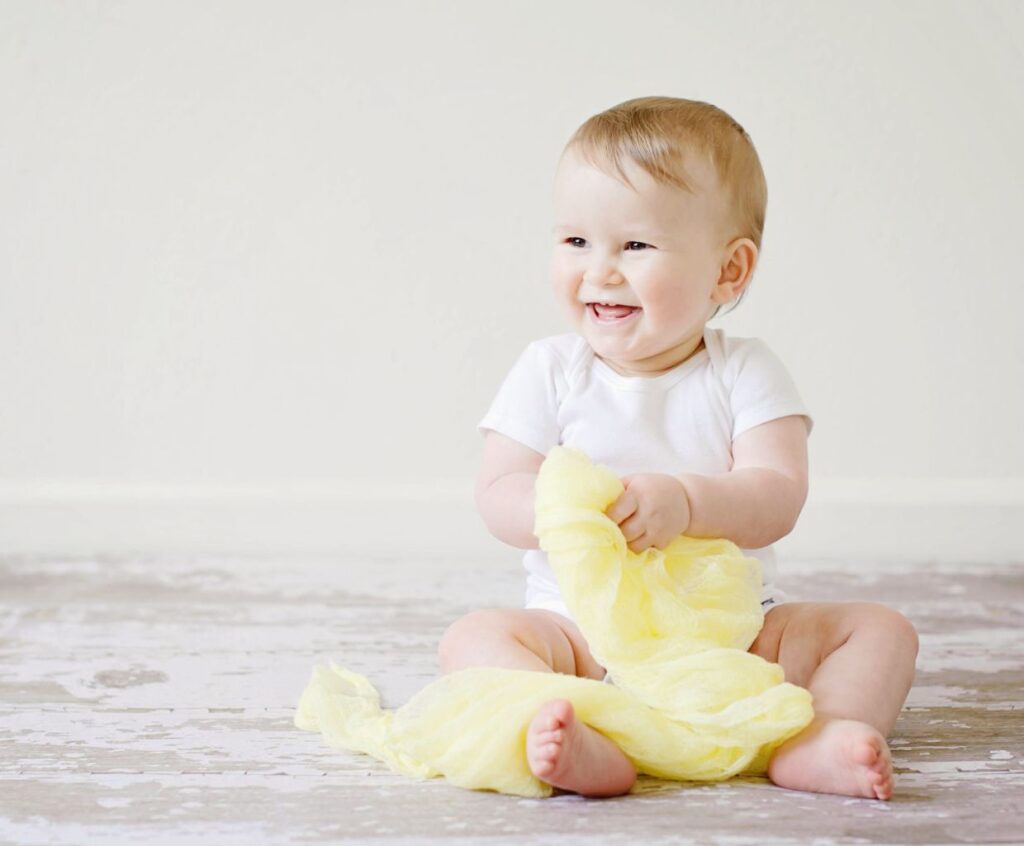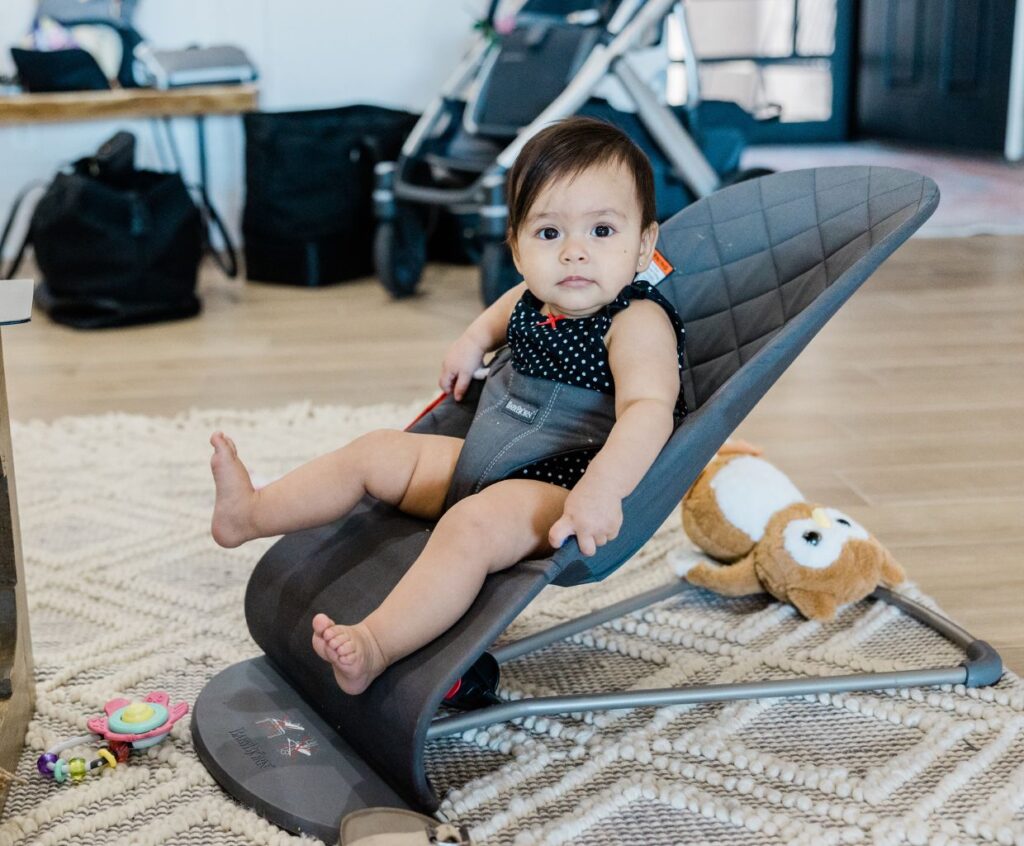How Far Can a Baby See? Understanding Infant Vision Development
Welcome to our article on understanding infant vision development! Being curious about how well your little ones can see the world around them is natural as parents.
In this article, we will explore the fascinating journey of a baby’s vision and provide insights into their visual capabilities at different stages of development.
Infant Vision Development
Infants are not born with fully developed vision. Their visual system undergoes significant changes and improvements during the first few months of life. Let’s take a closer look at the critical milestones in their vision development:
Birth to 3 Months
-
- Fuzzy Vision: At birth, a baby’s vision is quite blurry. They can only see objects within 8-12 inches from their face, roughly the distance to their parent’s face, during feeding or bonding moments.
-
- Preference for High Contrast: Babies are naturally attracted to high-contrast images. They can better distinguish black and white patterns or bold, high-contrast colors.
-
- Tracking Movements: During this time, babies develop their ability to track moving objects. They may follow a toy or a person’s face with their eyes as it moves across their field of vision.
How Far Can a Baby See at 3 to 6 Months
-
- Improved Visual Acuity: By three months, a baby’s vision becomes sharper, and they can focus better on objects. Their ability to see details and recognize familiar faces or objects starts to develop.
-
- Color Perception: At this stage, babies perceive a broader range of colors, and their color vision gradually becomes more refined.
-
- Depth Perception: Babies start to develop depth perception, which allows them to judge distances and perceive objects in three dimensions.
6 to 12 Months
-
- Increased Distance Vision: Around six months, a baby’s vision extends beyond just a few feet. They can see objects in the distance with more clarity.
-
- Eye-Hand Coordination: Babies develop hand-eye coordination, as they can now reach out and grab objects they see. This is an exciting time as they learn to explore the world around them through touch.
-
- Visual Memory: By this stage, babies start recognizing familiar objects or toys even when they are not in their direct line of sight. Their visual memory improves, allowing them to recall and anticipate certain visual stimuli.
It is important to note that every baby is unique and may reach these milestones at slightly different times. If you have concerns about your baby’s vision development, it is always best to consult a pediatrician or an eye care professional.
Understanding how far a baby can see and their visual development journey can help parents provide appropriate visual stimulation and support their overall growth. Enjoy witnessing the world unfold before your baby’s eyes!
Can newborns see clearly, or is their vision blurry?
Newborns have limited visual acuity, and their vision is generally considered blurry. At birth, their visual system is still developing, and their ability to focus on objects and perceive details is not fully developed. It takes time for their vision to mature and become more apparent.
How do babies perceive colors and shapes?
Babies perceive colors and shapes through their developing visual system. Here are some key points on how they perceive colors and shapes:
1. Color perception: Babies’ color perception gradually develops during the first few months of their life. At birth, they can distinguish between some colors, but their color vision is not fully developed. They are more sensitive to high-contrast colors like black, white, and red. Over time, their color perception improves, and they can begin to differentiate between a broader range of colors.
2. Shape perception: Babies are born with an essential ability to perceive shapes, but their perception becomes more refined as they grow. They are particularly attuned to simple geometric shapes like circles, squares, and triangles. As their visual system develops, they become better at recognizing and discriminating complex shapes and patterns.
3. Visual development: Babies’ visual system undergoes rapid development during the first year of life. Their vision is blurry at birth, and they can only see objects close to their face. Their visual acuity improves as they grow, and they can see objects at a distance. They also develop depth perception, which allows them to understand the relative distances between objects in their environment.
4. Visual stimulation: Babies learn about colors and shapes through visual stimulation. They are attracted to bright colors, high-contrast patterns, and moving objects. By exposing them to various colors and shapes in their surroundings, parents and caregivers can help stimulate their visual development.
5. Cognitive development: Babies’ perception of colors and shapes is closely linked to their cognitive development. They understand the names and meanings associated with different colors and shapes as they grow. This cognitive understanding helps them categorize and recognize objects more effectively.
It’s important to note that each baby’s visual development may progress slightly differently. If you have concerns about your baby’s vision or perception, it’s best to consult with a pediatrician or an eye care professional.
Tips for stimulating visual development in infants
1. Provide a variety of visual stimuli: Expose your baby to different types of visual stimuli, such as contrasting patterns, colorful toys, and interesting objects. This will help develop their ability to focus and track objects with their eyes.
2. Use high-contrast images: Infants are particularly drawn to high-contrast images, so using black and white or brightly colored toys, books, and mobiles can help stimulate their visual development.
3. Engage in face-to-face interaction: Babies love looking at faces, especially caregivercaregiversime. Face-to-face interaction with your baby, making eye contact, and using exaggerated facial expressions. This stimulates their visual development and helps bonding and social development.
4. Encourage visual tracking: Place a visually exciting object or toy slightly out of your baby’s reach and encourage them to follow it with their eyes. This helps develop their ability to track moving objects and improves their visual coordination.
5. Provide opportunities for visual exploration: Create a safe and stimulating environment for your baby to explore visually. Allow them to look at and touch objects of different shapes, textures, and colors. This encourages their curiosity and helps them learn about their surroundings.
6. Play peek-a-boo: Playing peek-a-boo with your baby helps stimulate their visual development by teaching them about object permanence. Cover your face with your hands or a cloth and then reveal it, encouraging your baby to follow the movement and anticipate your reappearance.
7. Limit screen time: While some educational content can be beneficial, limiting your baby’s time in front of screens is essential. Excessive screen time can hinder their overall development, including visual development.
8. Provide opportunities for outdoor play: Taking your baby outdoors exposes them to natural light, different colors, and textures, which are essential for visual stimulation. Going for walks or spending time in a park can help their visual development.
9. Use interactive toys: Choose toys that encourage your baby to engage with them visually, such as toys with buttons, lights, and moving parts. These toys help develop their hand-eye coordination and visual tracking skills.
10. Consult a pediatrician: If you have concerns about your baby’s visual development, it is always best to consult a pediatrician. They can guide, assess your baby’s vision, and recommend necessary interventions or therapies.


